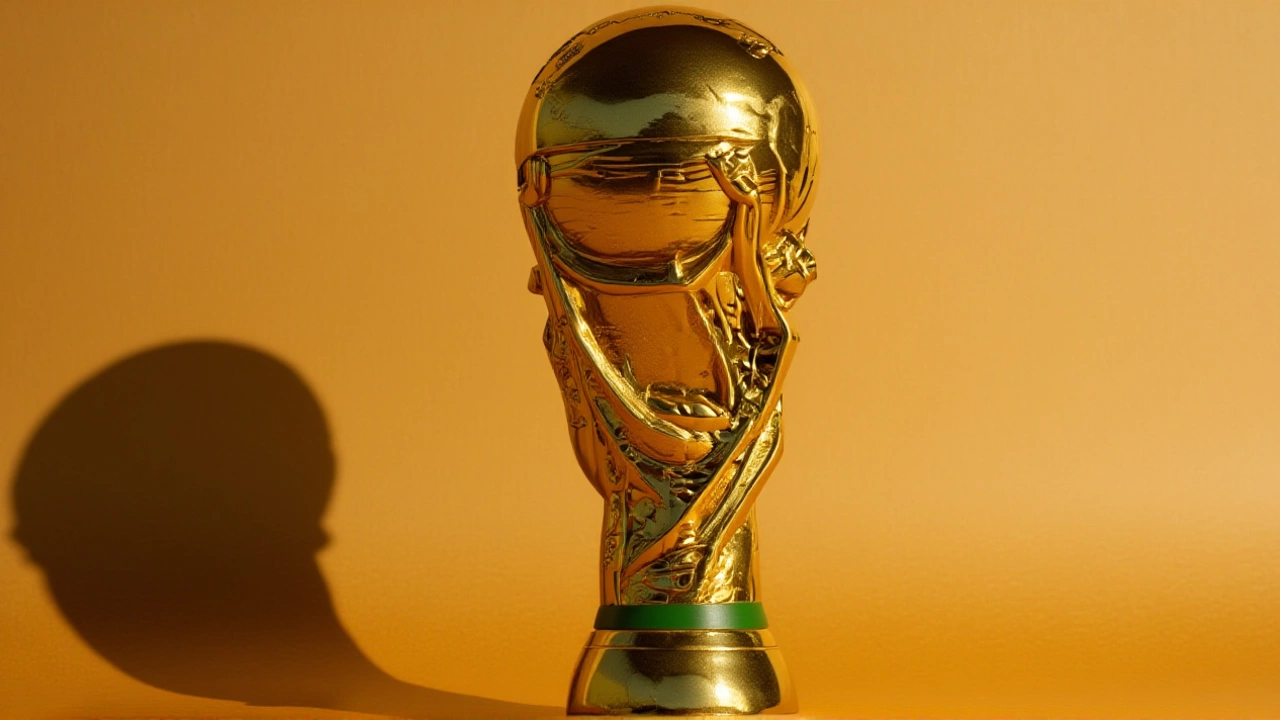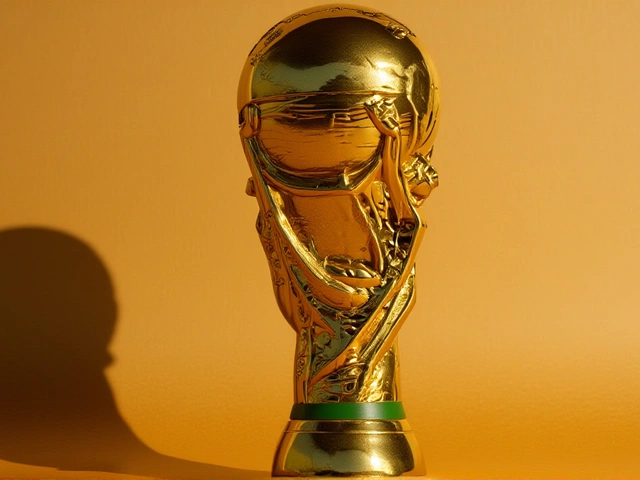On November 19, 2025, the tiny Caribbean island of Curaçao did the unthinkable: it qualified for the 2026 FIFA World CupMexico, United States, and Canada — becoming the smallest nation in history to reach the tournament’s final stage. With a population of just 160,000, Curaçao held Jamaica to a 0-0 draw in their final CONCACAF World Cup qualifier, finishing top of Group B. No one saw it coming. Not even the locals.
A Nation That Refused to Be Overlooked
Curaçao’s journey to the World Cup wasn’t built on star power or massive budgets. It was built on grit, unity, and a refusal to accept limits. For decades, the island — a constituent country of the Kingdom of the Netherlands — was considered a footballing afterthought. Its national team, nicknamed the Koninklijke Curaçaoanse Voetbalbond, had never even made it past the group stage in World Cup qualifying. But this time, everything clicked. A disciplined defense, a midfield that never quit, and a goalkeeping performance by Marvin Baudoin in the final match that had fans screaming into their phones from Willemstad to Amsterdam. The draw against Jamaica wasn’t pretty. Jamaica had 68% possession, 18 shots, and a late penalty appeal waved off by referee Juan Carlos Gómez after VAR review. But Curaçao held firm. And when the final whistle blew, players collapsed to the turf, tears mixing with sweat. A fan in the stands, 72-year-old Marcelo de Jong, told reporters: "I’ve waited 50 years. My father took me to my first match in 1973. I thought I’d die before seeing this."Suriname’s Miracle, Haiti’s Return, and the Fall of Giants
While Curaçao celebrated, Suriname — just across the border in South America — celebrated too. The Surinamese national team, known as the Suriname national football team, finished second in Group B after a tense 0-0 draw with Curaçao earlier in the campaign. Their playoff path now leads to Mexico in March 2026, where they’ll face a team from Asia, Africa, or Oceania for one of the final two spots in the 48-team World Cup. "It’s not the dream we wanted," said Suriname captain Joey van den Berg. "But it’s still a dream. We’re not done yet." Meanwhile, Haiti ended a 50-year World Cup drought with a commanding 2-0 win over Nicaragua. Their last appearance? 1974. This time, goals from Stéphane Charbonneau and Marcelin Désir sent 15,000 fans into a frenzy at the Stade Sylvio Cator in Port-au-Prince. "We’re back," read one banner. "And we’re not leaving." The fall of the giants was just as dramatic. Honduras and Costa Rica — two former World Cup regulars — were eliminated after their 0-0 draw. Both teams needed a win. Both teams choked. "It’s not just about talent," said former Costa Rican coach Óscar Ramírez in a post-match interview. "It’s about heart. And we lost ours."How Curaçao Broke the Iceland Record
Before this, the smallest nation to ever qualify for a World Cup was Iceland, with its 330,000 residents who stunned the world in 2018 by reaching the Round of 16. Curaçao’s population is less than half that. To put it in perspective: the island’s entire population is smaller than the seating capacity of MetLife Stadium, where the 2026 final will be held. Yet here they are — on the global stage. The secret? A grassroots revolution. Since 2015, the Curaçao Football Federation has invested in youth academies, partnered with Dutch clubs for coaching exchanges, and built artificial pitches in every major town. They didn’t buy stars. They built them. "We didn’t wait for the big clubs to come to us," said federation president Marlon de Freitas. "We went to the kids. And they responded."
What Comes Next? The Playoff Gauntlet and the 48-Team World
The 2026 World Cup is the first to feature 48 teams — a dramatic expansion from 32. That means more chances, more surprises, and more stories like Curaçao’s. Jamaica and Suriname will now enter the FIFA inter-federation playoffsMexico in March, where they’ll face opponents like Uzbekistan, Cape Verde, or Palestine. The winner of each playoff tie earns a spot in the finals. The tournament kicks off June 11, 2026, at Estadio Azteca in Mexico City, and ends July 19 at MetLife Stadium in New Jersey. Canada will host 13 matches, including games in Vancouver and Toronto. The U.S. will host 60 — including both semifinals and the final.Why This Matters
This isn’t just about football. It’s about representation. Curaçao, Suriname, Haiti — nations often erased from global headlines — now have a voice on the world’s biggest sporting stage. Their qualification proves that size doesn’t determine potential. Passion does. For kids in Willemstad’s alleyways, in Paramaribo’s dusty fields, in Port-au-Prince’s crumbling neighborhoods — they now have proof: if you believe, you can go further than anyone expects.Frequently Asked Questions
How did Curaçao qualify for the World Cup with such a small population?
Curaçao finished first in CONCACAF Group B with 10 points from six matches, including a crucial 0-0 draw against Jamaica on matchday six. Their defense conceded just two goals in six games — the best in the group. They didn’t rely on star players but on tactical discipline, youth development, and strong team cohesion built over a decade of grassroots investment by the Curaçao Football Federation.
Who is the smallest nation ever to qualify for a World Cup before Curaçao?
Before Curaçao, Iceland held the record, qualifying for the 2018 World Cup with a population of roughly 330,000. Curaçao’s population of 160,000 is less than half that size, making their qualification the most improbable in World Cup history — surpassing even Iceland’s legendary 2016 Euro run and 2018 World Cup campaign.
What happens to Suriname and Jamaica now?
Suriname and Jamaica will compete in the March 2026 FIFA inter-federation playoffs in Mexico, where they’ll face teams from other confederations — likely from Asia, Africa, or Oceania. The winners of each two-legged playoff tie earn one of the final two spots in the 48-team 2026 World Cup. Suriname’s path is especially tough, as they’ve never won a playoff match in World Cup qualifying history.
Why is the 2026 World Cup different from previous tournaments?
The 2026 tournament is the first to feature 48 teams instead of 32, expanding the field to include more nations from underrepresented regions. Hosted jointly by Mexico, the United States, and Canada, it will be the largest World Cup ever, with 104 matches played across 16 venues. This expansion made it possible for smaller nations like Curaçao and Suriname to qualify — and changed the global landscape of international football.
How did Haiti return to the World Cup after 50 years?
Haiti qualified by winning Group C with 12 points, capped by a 2-0 victory over Nicaragua on November 19, 2025. Goals from Stéphane Charbonneau and Marcelin Désir sealed their place. Their last appearance was in 1974, when they lost all three group matches. This time, they finished ahead of Jamaica and Panama in group standings, proving their resurgence isn’t a fluke — but the result of renewed investment in youth football and diaspora support.
What role did the CONCACAF expansion play in Curaçao’s success?
The expansion from 32 to 48 teams in 2026 gave CONCACAF more direct qualifying spots — increasing from 3.5 to 6.5. That meant second-place teams like Suriname and even third-place teams had a shot at playoffs. Curaçao’s group was weaker than expected, but they maximized every opportunity. Without the expansion, they wouldn’t have had a path. The structure changed the game — and finally gave small nations a real chance.

